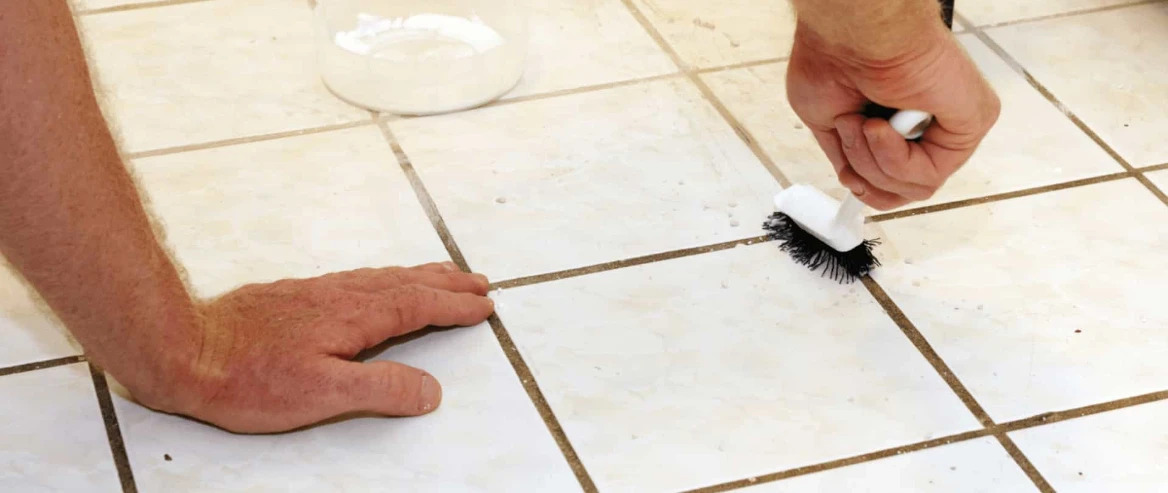When it comes to choosing the perfect grout for your bathroom, the decision can feel like a make-or-break moment in your renovation plans. With so many options available, each boasting unique qualities, how do you determine which one will truly stand the test of time in your bathroom? Let’s explore the nuances of various grout types tailored to suit different needs, ensuring your bathroom not only looks great but also maintains its pristine condition for years to come.
Types of Bathroom Grout
- When selecting the best grout for your bathroom, consider the different types available to ensure optimal performance and longevity. Color options play a crucial role in the aesthetics of your bathroom. Whether you desire a seamless blend or a contrasting pop, grout comes in a variety of colors to suit your design preferences. From classic white to bold blues, the color options are vast, allowing you to customize your bathroom to perfection.
- Application methods are another key consideration when choosing the right grout for your bathroom. The two main application methods are sanded and unsanded grout. Sanded grout is ideal for wider grout lines, typically over 1/8 inch, providing extra strength and durability. On the other hand, unsanded grout is best suited for thinner grout lines, less than 1/8 inch, ensuring a smooth and polished finish. Understanding the differences in application methods will help you select the most suitable grout for your bathroom project.
Pros and Cons of Epoxy Grout
- To ensure the optimal performance and longevity of your bathroom grout, evaluating the pros and cons of epoxy grout is essential. Epoxy grout is known for its exceptional durability, making it a long-lasting option for high-moisture areas like bathrooms. While initially more costly than traditional cement-based grouts, the longevity and low maintenance requirements of epoxy grout can offset the higher upfront cost over time.
- In terms of application, epoxy grout can be a bit challenging to work with due to its quick setting nature. It requires precision during installation to avoid hazing on the tile surface. However, once properly applied, epoxy grout forms a waterproof barrier that’s resistant to stains, chemicals, and cracking, enhancing the overall integrity of your bathroom surfaces.
- When it comes to cleaning, epoxy grout is relatively easy to maintain. Its non-porous nature prevents the growth of mold and mildew, simplifying routine cleaning tasks. A mild detergent and water solution are usually sufficient to keep epoxy grout looking fresh and new.

Benefits of Cement-Based Grout
- Cement-based grout offers exceptional versatility and strength, ideal for a variety of bathroom tiling projects. When considering cement-based grout for your bathroom, you’ll benefit from a wide range of grout color options to suit your design preferences. These grouts are known for their durability, making them a reliable choice for high-traffic areas like bathrooms.
- In terms of application techniques, cement-based grout is relatively straightforward to work with. It requires mixing with water to achieve the desired consistency before being applied between tiles using a rubber float. Once the grout has been applied, proper sealing is essential to protect it from moisture and staining. Sealing methods vary depending on the specific type of cement-based grout used, so be sure to follow manufacturer recommendations for the best results.
Choosing Sanded Vs. Unsanded Grout
- Considering the durability and versatility of cement-based grout in your bathroom tiling project, your next crucial decision lies in choosing between sanded and unsanded grout. The choice between sanded and unsanded grout depends on the width of your grout lines. Sanded grout is recommended for grout joints wider than 1/8 inch, offering better strength and resistance to cracking. On the other hand, unsanded grout is ideal for joints less than 1/8 inch wide, providing a smoother finish necessary for tighter spaces.
- When it comes to grout color options, both sanded and unsanded grouts come in a variety of colors to match your tiles and design preferences. It’s essential to choose a color that complements your tiles and enhances the overall look of your bathroom.
- In terms of grout sealing techniques, both sanded and unsanded grouts require proper sealing to prevent water penetration, mold growth, and staining. After allowing the grout to cure, apply a high-quality grout sealer to protect the grout lines and prolong their lifespan. Remember to reapply the sealer periodically as part of your bathroom maintenance routine.
Tips for Maintaining Bathroom Grout
For effective maintenance of bathroom grout, prioritize routine cleaning and sealing to ensure longevity and prevent issues like water damage and mold growth.
- Cleaning techniques play a vital role in preserving grout. Use a mixture of equal parts vinegar and water or a mild detergent to scrub the grout lines regularly. Avoid harsh chemicals that can deteriorate the grout over time. Prevention is key; wipe down the grout after each shower to prevent soap scum buildup.
- Sealing requirements are equally important. Ensure the grout is completely dry before applying a quality grout sealer to protect it from moisture penetration. Reapply the sealer annually or as recommended by the product instructions to maintain its effectiveness. Product recommendations include reputable brands like Aqua Mix Sealer’s Choice Gold or Miracle Sealants 511 Impregnator.
Conclusion
- In conclusion, when choosing the best grout for your bathroom, consider factors such as durability, water resistance, and ease of maintenance. Epoxy grout offers superior strength and resistance to stains and chemicals, while cement-based grout is more affordable and easier to work with.
- When deciding between sanded and unsanded grout, take into account the size of your tiles and the width of your grout lines. Regular cleaning and sealing of bathroom grout will help prolong its lifespan and keep your bathroom looking fresh and clean.